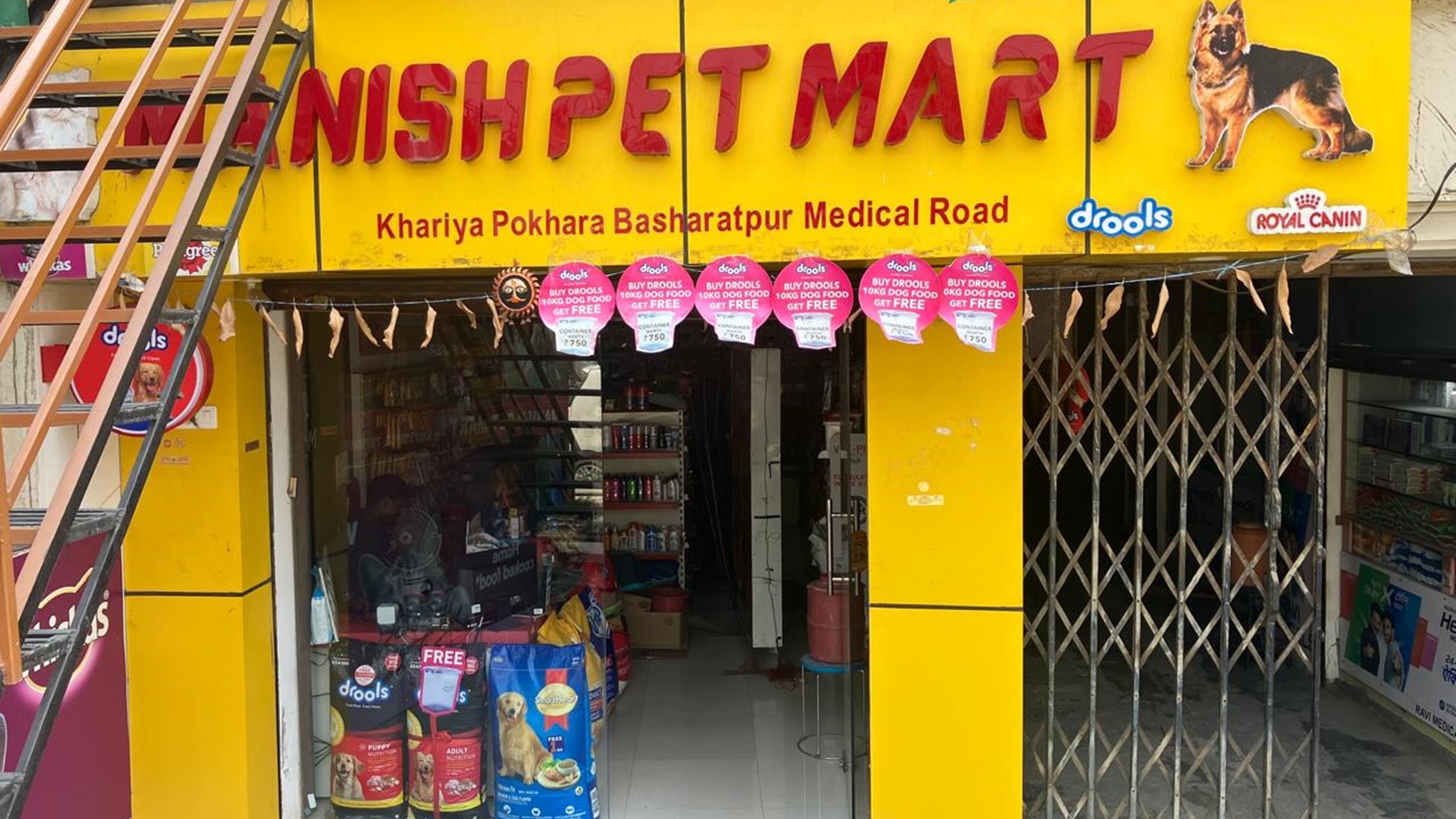GORAKHPUR VOTES in the final phase of the Lok Sabha elections on June 1 but what catches the eye as you step out of the railway station are not the colourful party flags and posters. It’s an array of bright signboards with a common pitch — pet food.
Station Road, which was once a sales hub of poultry feed in Gorakhpur, is now the symbol of a new market that, sellers and officials say, is booming in tier-2 and tier-3 cities fuelled by changing lifestyles and rising economic levels.
“In this city, there are over 100 shops selling pet food, medicines and accessories. The number has risen sharply in the last five years. The demand of pet food, mainly for cats and dogs, is estimated in the range of Rs 50-60 lakh every month. It was just Rs 5-6 lakh about five years ago,” says Ashutosh Agarwal who is busy with customers at Asian Farma and Asian Pet Shop.
About 2 km away, on Medical Road, Manish Kumar Gupta says his father used to sell locks at their shop until a few years ago. “Then, I began selling pet food. I started with just three packets. Now, pet food worth Rs 40 lakh is stocked in my godown,” says Gupta, the owner of Manish Pet Mart.
Agarwal and Gupta stock premium brands, such as Pedigree, Whiskas, Royal Canin, Drools and Farmina — Gupta is also the local distributor of Drools. “Even in the pet food market, the demand for starter food, to be fed to pups and kittens (aged 1-3 months), has gone up sharply. A 1-kg packet of starter food costs anywhere from Rs 390 to Rs 750 depending on the brand,” says Gupta. “All of this began with a sharp jump in demand for pet food during Covid. That was also the time when many people bought dogs online,” he adds.

But then, to understand Gorakhpur’s love for pets, you needn’t look beyond its most prominent public face. UP Chief Minister Yogi Adityanath has two dogs named Kalu and Gullu, who are there to greet him whenever he visits the Gorakhnath temple and mutt which he heads.
For the elections this time, Adityanath’s task is cut out although Gorakhpur has been a BJP stronghold since the 1990s and he himself has been a five-time MP from here. With the BJP raising the stakes, he has to ensure the victory of the party’s candidate Ravi Kishan, the actor who is seeking re-election. The SP and Congress have joined hands to field Kajal Nishad while the BSP has put up its long-time worker Javed Ashraf alias Javed Simnani.
In 2019, the BJP was a clear winner with a vote share of 60.5 per cent, up from 51.8 per cent in 2014. The SP-BSP alliance managed 35 per cent of the vote share in the last elections while the Congress came a distant third with 1.9 per cent.
Back on Medical Road, Manish Gupta estimates the worth of the city’s pet market, including food and accessories such as chains, jackets, combs, bowls, at “around Rs 1 crore per month”. “Apart from this, there is substantial expenditure on grooming, vaccination and medicine,” he says.
Officials at the Union Ministry of Animal Husbandry and Fisheries have identified the pet industry as one of the country’s “sunrise” sectors. “The pet food market is estimated at Rs 4,500 crore to Rs 5,000 crore, and it is growing at 15 to 20 per cent annually. Earlier, it was concentrated in metros but now it is spreading across tier-2 and tier-3 cities… There are two broad reasons. The first is the rising income level and the second is psychological, as people in loneliness see pets as their companions,” says a senior official.
Salil Murthy, managing director, Mars Petcare India, says, “According to a report by Mordor Intelligence, the Indian pet food market is projected to be valued at USD 0.85 billion in 2024 and is expected to grow to USD 1.87 billion by 2029… The overall market growth is driven by factors such as rising incomes, the prevalence of nuclear families, and evolving attitudes toward pets and pet ownership.”
In the case of Gorakhpur, too, the numbers echo the story.
Official data shows India’s per capita income increased by 36 % in 10 years, from Rs 63,462 in 2011-12 to Rs 86,034 in 2020-21. In the same period, Gorakhpur’s per capita income expanded by 66 % — from Rs 20,950 in 2011-12 to Rs 34,855 in 2020-21. It stood 61st among UP’s 75 districts in 2011-12, and had jumped to 43rd by 2020-21.
But then, the narrative of incomes and aspirations driving the booming pet market in this constituency also runs parallel to the increasing empowerment of a large section known as labharthis, or beneficiaries, mainly of Central schemes — again, a recurring theme in the emergence of tier-1 and tier-2 cities.
For instance, in Gorakhpur district, where the National Food Security Act portal shows 7.93 lakh ration cards, 61,389 houses had been completed under the Pradhan Mantri Awaas Yojana-Gramin (PMAY-G) till May 25.
In the city’s Bank Road area, meanwhile, Faisal Monish , who deals in all breeds, is a “beneficiary” of the pet market boom. “There is a higher demand for dogs in the economy segment — Rs 5,000 to Rs 20,000 — such as Labrador and German Shepherd.”









